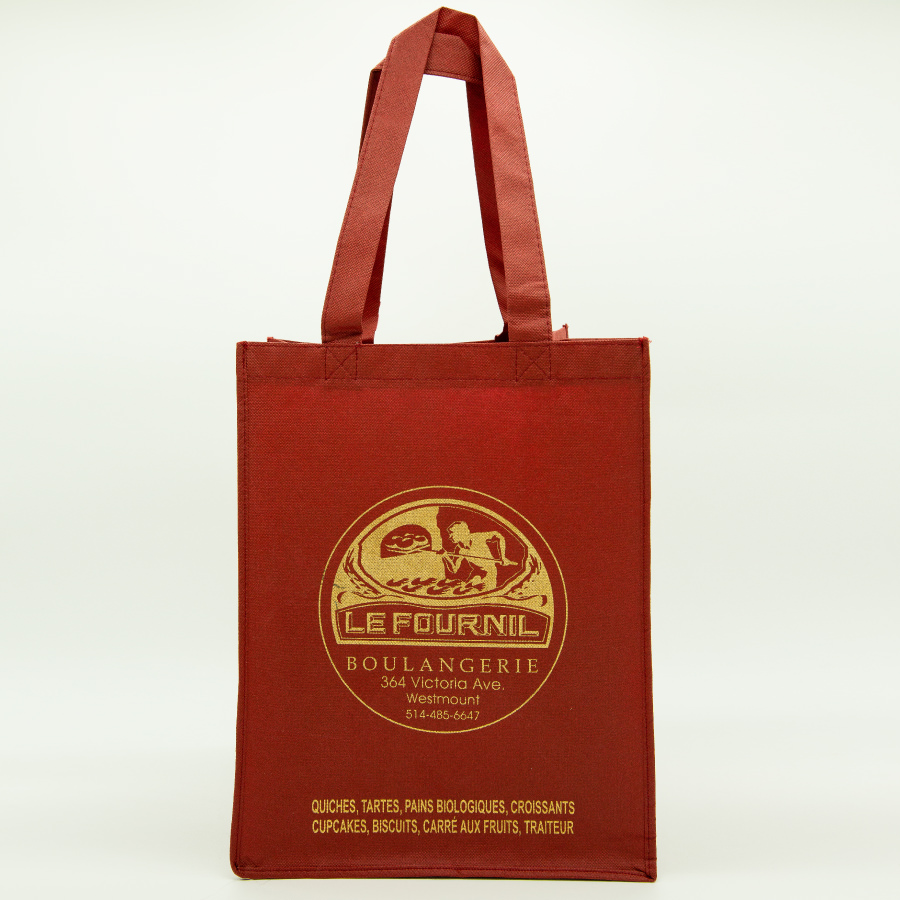When creating custom packaging, you might have someone ask how much print coverage you need. At LeKAC, we’ll often refer to different printing levels by the number of colours the design uses, which can get confusing when you combine it with print coverage.
In this week’s post, we’re clearing up the language of printing. Keep reading to learn more!
One Colour Print
When we talk about this print level, we’re referring to a design that only uses one colour. All of our packaging includes one colour print on a base in the pricing. Our base colours include brown or white Kraft for our paper products, and a choice of coloured fabric for our reusable bags.




Only using one colour doesn’t mean that you can only have one coloured element on your packaging! One colour print is versatile and can create eye-catching, minimalistic designs.
When choosing a colour to use, remember that some colours show up on different materials better than others! Since brown Kraft is a more natural material, it absorbs more ink than a white Kraft base. To learn more about what colours to consider when using kraft, check out this blog post!
For reusable bags, don’t worry! Most basic single colour prints are screen printed using a spot colour. Spot colours provide more opaque results, and can be layered on. For highly detailed reusable bag designs, we recommend a laminated bag to more accurately capture the complexity.
Two Colour Print
As the name implies, two colour print is a step up from one colour. These designs can also be minimalistic and eye-catching, while providing a little more depth.
Overall, we consider any design that needs an extra colour a two colour print, which comes at an additional cost.


Multi-Colour Print
Next, we call any design that needs three or more colours multi-colour print. You may also sometimes hear us call this full-colour!
This level of print comes at the highest additional cost, but affords you more freedom in designing your packaging. Check out some examples of multi-colour print below!




This level of print lets you have the highest level of freedom with your designs. If you’re making a design on your own, it’s important to remember to design using CMYK or Pantone colour modes! This will ensure that the colours you’ve envisioned come out accurately in print.
Different Print Coverage Levels
We’ve established the different colour levels you can have in your packaging designs, but now it’s time to talk coverage. When referring to print coverage, we’re talking about how much of the packaging the design will cover!
There are two main types of print coverage: partial and full. Generally, any design that covers 50% or more of a package’s total surface area (inside and out!!), is considered full coverage.



So what if you want a design to cover a large area on your packaging, but want to find the most cost-efficient option? Try a one colour print! Getting creative with how far you can stretch the colour can be a great way to stay on-budget while still getting an eye-catching design.
If you’re not sure if your design would be considered full or partial coverage, don’t worry! Contact us, and our Business Development Consultants and Graphic Designers can let you know. Don’t have a design yet? We’ve got you covered thee too. Check out our branding and graphic design services.






